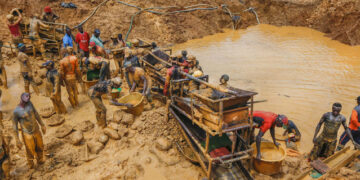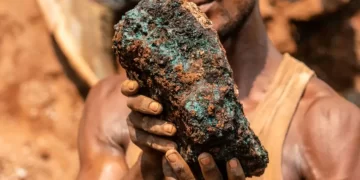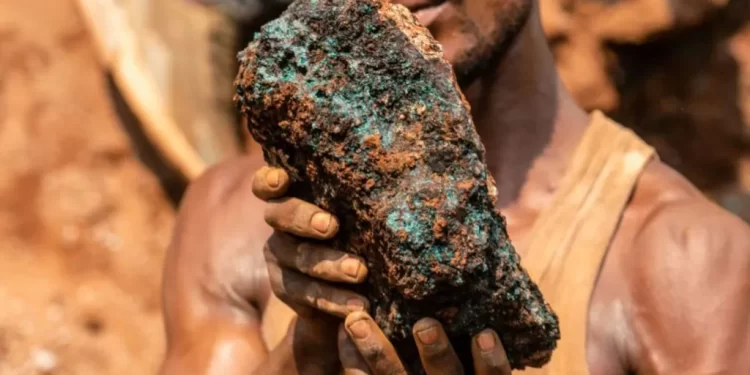Rescue teams are racing against time in the Democratic Republic of Congo after a bridge collapse at the Kalando cobalt mine in Lualaba province left at least 32 miners dead and several others feared trapped. But as recovery efforts continue, questions are mounting about the chain of events that led to the tragedy.
According to local authorities, the disaster began on Saturday when a group of unauthorized artisanal miners forced their way into the mine—an area where they had already been banned from operating. Roy Kaumba Mayonde, a senior local official, said the miners had repeatedly defied the restrictions placed on the site, describing the invasion as part of a recurring problem faced by mining companies operating in the region.
What happened next remains deeply contested.
Gunfire, Panic and a Deadly Rush
The government’s mining oversight agency, SAEMAPE, said military personnel guarding the concession allegedly fired shots as the miners broke in. The gunfire reportedly triggered panic among the group, prompting dozens of miners to flee across a makeshift wooden bridge they had constructed earlier.
The bridge—unstable, crudely built, and never intended to hold a large crowd—collapsed under the weight of the miners in a matter of seconds.
Mayonde said the structure “could not sustain the sudden, hasty crossing” as fear and confusion took over. Bodies were later seen strewn across the riverbed, according to unverified images circulating on social media.
Read Also: NHIS waives one-month wait for new members and renewals
The DR Congo military has not yet responded to the allegations that its personnel’s actions directly contributed to the deadly collapse.
A Familiar Danger in a High-Stakes Industry
Tragic accidents like this are not rare in DR Congo, where an estimated 1.5 to 2 million artisanal miners work in hazardous, unregulated conditions. Many enter private mining concessions illegally, driven by poverty and the hope of finding small quantities of cobalt, copper or other minerals that can be sold to local traders.
The Kalando mine, located in the resource-rich south, is part of Congo’s sprawling network of mineral sites that feed the global demand for cobalt—a metal essential in electric vehicle batteries, aerospace technology, and numerous industrial applications.
Despite its strategic importance, cobalt extraction in DR Congo has long been shadowed by allegations of unsafe working conditions, child labour, human rights abuses, and corruption.
A Tragedy Authorities Say Could Have Been Avoided
Mayonde described the collapse as “tragic but preventable,” citing frequent invasions of mining concessions by artisanal miners who often bypass safety rules and erect makeshift infrastructure in dangerous terrain.
Following the incident, the government reiterated its call for illegal miners to accept the state’s offer of alternative vocational training in agribusiness, part of a policy aimed at reducing risky artisanal mining activities.
Search Efforts Ongoing
Rescuers continue to search through the rubble and debris, though hopes of finding more survivors are fading. Local residents have gathered at the site, many in shock as recovery teams pull bodies from the collapsed structure.
As investigations begin, families of the victims and human rights groups are demanding clearer answers:
Who fired the shots? Why were the miners able to access the banned site? And could this catastrophe have been prevented?
For now, the Kalando community grieves, while the nation confronts yet another painful reminder of the deadly risks embedded in DR Congo’s mineral wealth.
SOURCE: BBCNEWS




























